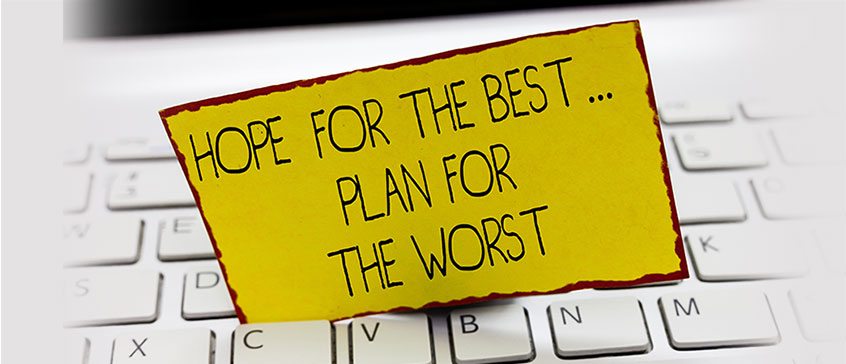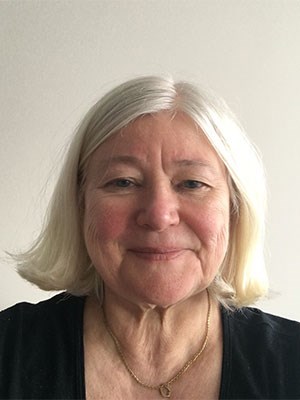Home / Health, Wellness and Safety / News / A passion for emergency preparedness
A passion for emergency preparedness

An interview with instructor Laurie Pearce
Dr. Laurie Pearce is a developer and instructor for our Emergency Management for Organizational Continuity (EMOC) program.
How did you come to teaching and researching in emergency management after an earlier career in social work?

I spent most of my career in social work in emergency child welfare for what is now the Ministry of Children and Family Development (MCFD). I started off working with runaway youth in downtown Vancouver and then worked with the Car 86 program. The Car 86 program answered calls involving intimate partner violence and serious child welfare after regular working hours, with a team consisting of a police officer and a social worker. Those calls really introduced me to the impacts on the police and other first-responders of repeatedly answering these types of calls; managing post-disaster trauma has remained a key interest.
As a supervisor at Vancouver After Hours, I was also given the responsibility for planning how MCFD would respond to a disaster that might occur on an evening or weekend in terms of providing emergency support services for evacuees. We worked to ensure that children and youth in foster and group home care, as well as adults with special needs in care, were provided for. I was sent to take a course at the Canadian Emergency Preparedness College in Arnprior, Ontario, and a whole new world opened up for me. I took every course I could and realized that even with as much as had been done, there was so much more to learn and so much more that needed to be done.
I went back to university and completed a master's and PhD at the School of Community and Regional Planning at UBC, with a focus on disaster management planning and community engagement. I was able to apply those concepts in various ways while still with MCFD, and I eventually took early retirement and started on a second career in emergency and disaster management training, education and research.
Those early Car 86 days led me to become the research chair for the SIMTEC project at the Justice Institute of BC, researching the key stressors on emergency management professionals working in emergency operations centres and developing key strategies for managing those stressors and practical training tools. My work with Indigenous people led me to researching how evacuations of First Nations communities were being planned and making recommendations to improve the approaches then being taken. My work with children and youth has interested me in conducting research on how to better engage young people in disaster and emergency management planning initiatives. In retrospect, it was an easy fit—it is all about making a positive difference in people's lives during difficult times.
Tell us about one of your most memorable challenges in emergency planning.
I don't really have a single memorable challenge—the challenge I have faced, and continue to face, is getting government officials and responders to recognize that the rescue phase of disasters, while it gets all of the media coverage and attention, and is critical in terms of saving lives and property, should not be the key focus of disaster and emergency management. While we cannot prevent most hazards from occurring, we can prevent many of the impacts that occur. Local and regional governments continue to let people build in inherently unsafe places such as flood plains, on unstable soils, properties subject to storm surges and surrounded by forests susceptible to fires.
Senior decision-makers need to consider potential hazards when making land-use decisions. Businesses need to look at the external risks, as well as internal vulnerabilities when locating their physical offices and buildings. For every dollar spent on mitigation, the savings down the road are anywhere from four to 10 times that amount. But getting decision-makers to allocate funds for mitigating a potential disaster that might not occur for the next 10, 20 or 50 years is a hard sell—even though the disaster could just as easily occur today, tomorrow or next week.
The COVID-19 pandemic is the emergency on most people's minds these days, but how does the EMOC program help people to think beyond this pandemic?
Business continuity planning for the pandemic involved huge challenges for many organizations. "Working from home" is a simple concept, but suddenly moving to a working platform that was solely online necessitated a huge investment in technology, equipment and infrastructure. As well, day-to-day management of staff had to be adapted to the new environment, and staff had to figure out how to problem-solve and work collaboratively under the new system. The concurrent lack of child care and care for dependant adults led to terrible dilemmas for many employees who still had a job, but needed to also educate and/or care for others. Many retail businesses, restaurants and cafés, and service, travel and other businesses were unable to make the shift and closed.
The lessons learned came at a very high cost. But the pandemic did not destroy and damage buildings and infrastructure. Earthquakes, floods, fires and other hazards do destroy property, inventory and supply chains, and injure and kill people. The challenges faced by businesses when the business itself and/or the community is severely impacted by a disaster pose even greater challenges. What if the employee didn't have a home to go to? What if there was no electricity or water? Then what would happen?
The EMOC program will help businesses understand the range of potential hazards and the importance of planning for all potential hazards, not just for a pandemic. While some businesses closed their doors as a result of COVID-19, many carried on albeit with reduced staffing and sales. Those same businesses need to consider what would happen if the building and infrastructure were damaged or destroyed, and value the importance of business continuity and recovery.
Why did you want to become involved in helping develop UVic's EMOC program?
The EMOC program interested me for several reasons. First, one appeal was that many of the students would already be established in the public and private sector. While teaching younger students is important and valuable, I was particularly drawn to engaging students already in the workforce. I was involved in a couple of community-based student projects when teaching at Royal Roads University that examined the engagement of the private sector in the Capital Regional District of British Columbia in business continuity planning (BCP). While most large corporations have engaged in BCP, most medium-sized and small businesses have not. The current pandemic also revealed that many public sector organizations and not-for-profit organizations had not dedicated the necessary resources to BCP. The ability to reach out to those whose organizations could directly benefit from the EMOC program was very appealing.
Secondly, there has not been a lot of information and research from a Canadian perspective. Most of the articles in BCP journals are American-based. Developing and teaching the first course in this program is also an opportunity for me to find out more about what Canadian businesses are most concerned about, what they know and don't know, and how best to develop programs and strategies to engage those businesses in BCP.
Thirdly, disaster and emergency management is a huge topic. BCP crosses all of the phases—the need to plan, prepare, mitigate, respond and recover. There isn't an organization, government or business that couldn't benefit from developing and testing BCP. This is an opportunity to reach out and provide relevant and timely information to learners who will, in turn, contribute to the disaster resilience of their organization and community. Who would turn that down?
Some people might think emergency planning is all "doom and gloom." What is your advice to those who are feeling the pressure in this area?
Emergency planning is all about avoiding the negative and focusing on the positive. While we must always plan for when things go wrong, 90% of the work should be focused on how to avoid the potential risks and impacts of disasters. Rather than think about the reality that in a fire one's house might burn down, how much better to focus on what could be done to avoid that outcome—such as practicing FireSmart principles.
I tell people, "Anything you do to prepare and plan for a disaster increases the disaster resiliency of yourself, your family, your home, your work and your community." If all you can do is ensure that you have a flashlight, that may be enough to save your life. If you have some first aid training, you could save someone else's life. If you practice "Drop, Cover and Hold On" with your staff, you could prevent serious injury or death for many following an earthquake. Emergency planning has nothing to do with "doom and gloom," but rather is all about "anticipate and mitigate." Emergency planning is "walking down the sunny side of the street—eyes wide open."
What do you do when you aren't teaching and researching?
Hmm, good question—getting some sleep? No, seriously, disaster and emergency management is a passion for me. I volunteer with the BC Disaster and Psychosocial Services (DPS) program—DPS volunteers are deployed to provide psychological first aid services to residents and responders who have been impacted by disasters. I sit on the British Columbia DPS Council as well. I act as the treasurer of our local community road society and as the secretary of our ratepayers' association.
I like to cook and, when not under the restrictions of COVID-19, to entertain family and friends. I also like to read and swim, and hope to return to swimming once the restrictions are lifted.
- Posted August 22, 2022
RELATED TOPICS: Health, Safety and Emergency Management
Visit Registration
2nd Floor | Continuing Studies Building University of Victoria Campus 3800 Finnerty Road | Victoria BC | CanadaTel 250-472-4747 | Email uvcsreg@uvic.ca
2025 © Continuing Studies at UVic
Legal Notices |
Sitemap

